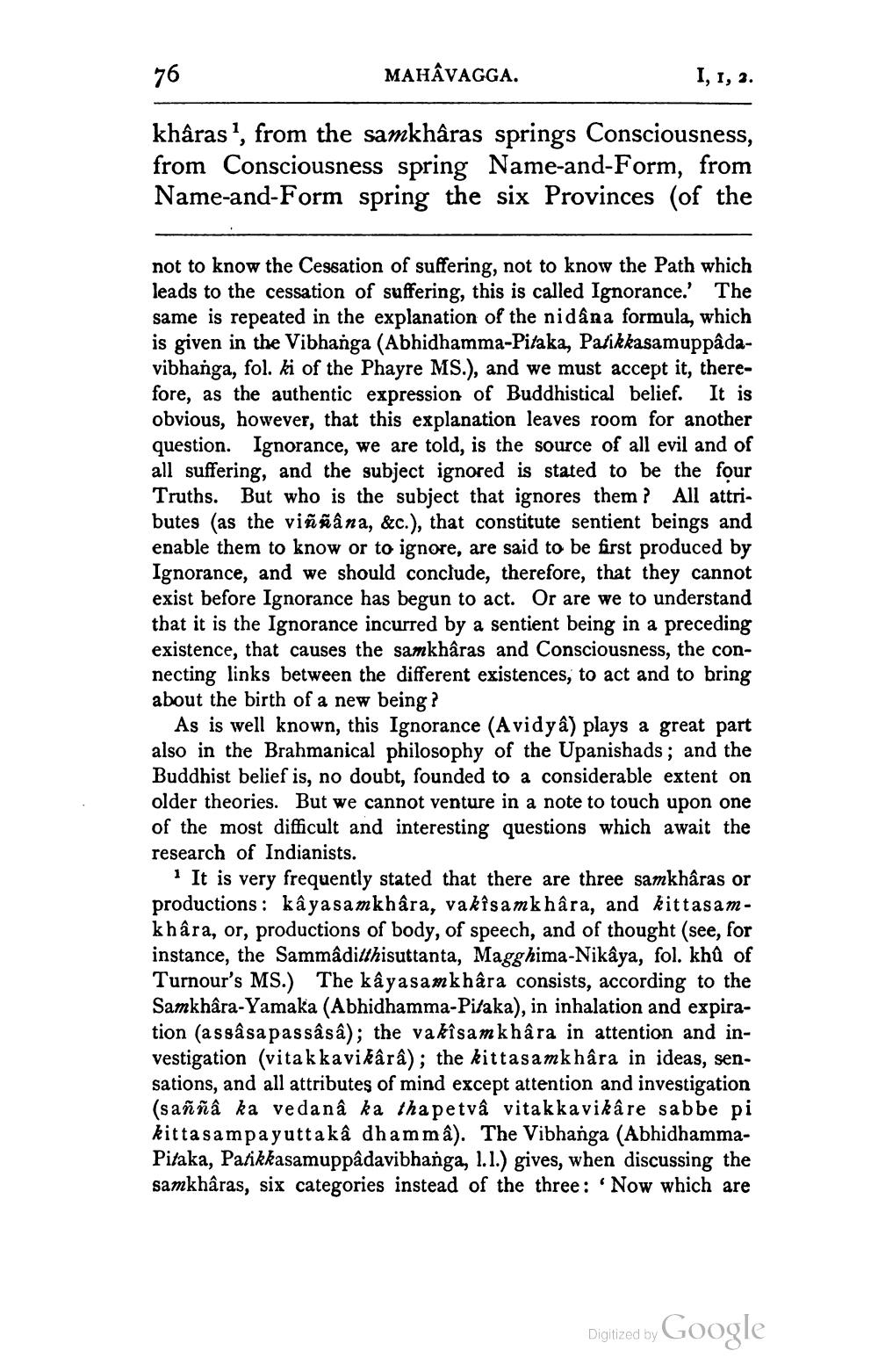________________
MAHAVAGGA.
76
khâras', from the samkhâras springs Consciousness, from Consciousness spring Name-and-Form, from Name-and-Form spring the six Provinces (of the
I, I, 2.
not to know the Cessation of suffering, not to know the Path which leads to the cessation of suffering, this is called Ignorance.' The same is repeated in the explanation of the nidâna formula, which is given in the Vibhanga (Abhidhamma-Pitaka, Patikkasamuppâdavibhanga, fol. ki of the Phayre MS.), and we must accept it, therefore, as the authentic expression of Buddhistical belief. It is obvious, however, that this explanation leaves room for another question. Ignorance, we are told, is the source of all evil and of all suffering, and the subject ignored is stated to be the four Truths. But who is the subject that ignores them? All attributes (as the viññâna, &c.), that constitute sentient beings and enable them to know or to ignore, are said to be first produced by Ignorance, and we should conclude, therefore, that they cannot exist before Ignorance has begun to act. Or are we to understand that it is the Ignorance incurred by a sentient being in a preceding existence, that causes the samkhâras and Consciousness, the connecting links between the different existences, to act and to bring about the birth of a new being?
As is well known, this Ignorance (Avidyâ) plays a great part also in the Brahmanical philosophy of the Upanishads; and the Buddhist belief is, no doubt, founded to a considerable extent on older theories. But we cannot venture in a note to touch upon one of the most difficult and interesting questions which await the research of Indianists.
1 It is very frequently stated that there are three samkhâras or productions: kâyasamkhâra, vakîsamkhâra, and kittasamkhâra, or, productions of body, of speech, and of thought (see, for instance, the Sammâditthisuttanta, Magghima-Nikâya, fol. khû of Turnour's MS.) The kâyasamkhâra consists, according to the Samkhâra-Yamaka (Abhidhamma-Pitaka), in inhalation and expiration (assâsapassâsâ); the vakîsam khâra in attention and investigation (vitakkavikârâ); the kittasamkhâra in ideas, sensations, and all attributes of mind except attention and investigation (saññâ ka vedanâ ka thapetvâ vitakkavikâre sabbe pi kittasampayuttakâ dham mâ). The Vibhanga (AbhidhammaPitaka, Patikkasamuppâdavibhanga, 1.1.) gives, when discussing the samkhâras, six categories instead of the three: 'Now which are
Digitized by
Google




